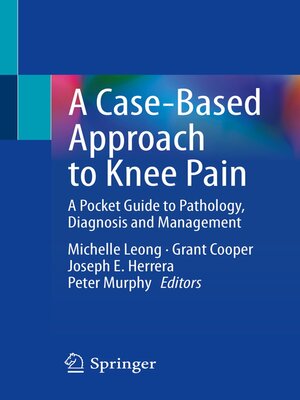A Case-Based Approach to Knee Pain
ebook ∣ A Pocket Guide to Pathology, Diagnosis and Management
By Michelle Leong

Sign up to save your library
With an OverDrive account, you can save your favorite libraries for at-a-glance information about availability. Find out more about OverDrive accounts.
Find this title in Libby, the library reading app by OverDrive.



Search for a digital library with this title
Title found at these libraries:
| Library Name | Distance |
|---|---|
| Loading... |
Knee pain is one of the most common reasons for patient visits to orthopedic, physiatrist, primary care and sports medicine offices. Most books that cover this topic review it as a chapter within a larger book on orthopedics as a whole, or they focus on one specific aspect of knee pathology, such as osteoarthritis.
This practical text is an evidence-based, user-friendly review of the literature for the breadth of knee pathologies that present to the busy practitioner. Opening with a review of the relevant anatomy, subsequent chapters discuss injuries to ligaments and tendons, the meniscus, and osteoarthritis. Additional chapters cover knee pain in the pediatric patient, sports trauma and fractures, and rheumatologic and infectious disease considerations. And while reviewing pathology and its diagnosis and treatment is important, proceeding through real case studies is extremely valuable in bringing the diagnosis and treatment of knee pathologies to life, hence an engaging section of clinical case material rounds out the presentation.
Taken together, A Case-Based Approach to Knee Pain will be an ideal resource for musculoskeletal medicine practitioners of all types.
This practical text is an evidence-based, user-friendly review of the literature for the breadth of knee pathologies that present to the busy practitioner. Opening with a review of the relevant anatomy, subsequent chapters discuss injuries to ligaments and tendons, the meniscus, and osteoarthritis. Additional chapters cover knee pain in the pediatric patient, sports trauma and fractures, and rheumatologic and infectious disease considerations. And while reviewing pathology and its diagnosis and treatment is important, proceeding through real case studies is extremely valuable in bringing the diagnosis and treatment of knee pathologies to life, hence an engaging section of clinical case material rounds out the presentation.
Taken together, A Case-Based Approach to Knee Pain will be an ideal resource for musculoskeletal medicine practitioners of all types.







